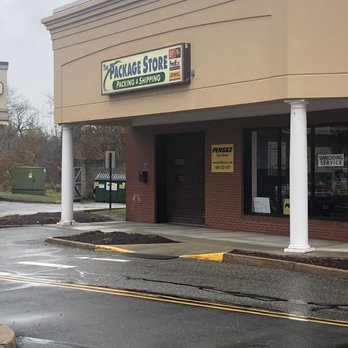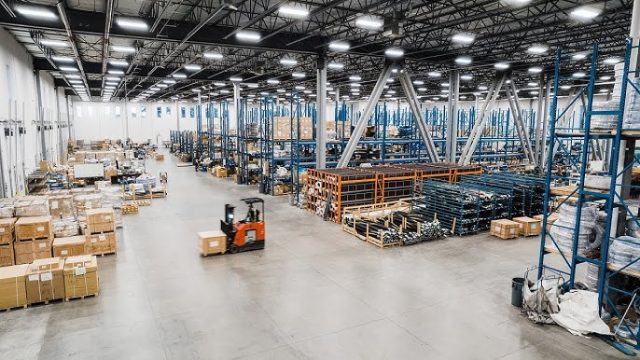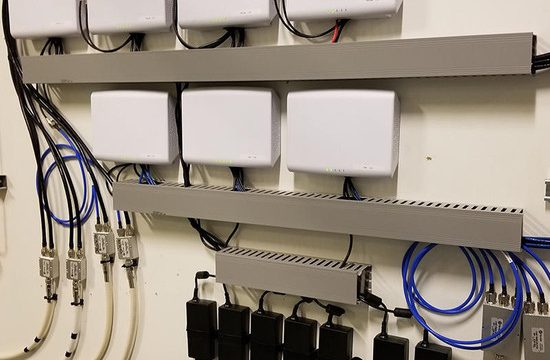ERCES Installation
With Maximum Communications' expert installation of ERCES (Emergency Responder Communication
Enhancement Systems), you can be sure that your emergency response will go smoothly. We create
and install reliable in-building radio coverage solutions that keep first responders in touch when
it matters most.
Expert ERCES Installation and Maintenance Services
At Maximum Communications, we provide ERCES installation and maintenance services that keep your building safe and code compliant. An ERCES (Emergency Responder Communication Enhancement System) makes sure first responders can talk to each other inside when normal signals are weak.
Our team installs Bi-Directional Amplifiers (BDAs) and Distributed Antenna Systems (DAS) to boost and spread emergency radio signals throughout the property. This gives firefighters, police, and medical teams clear communication even in basements, stairwells, or areas with heavy concrete and steel.
We also handle ERCES testing, inspections, and routine maintenance. All systems follow IFC Section 510 and NFPA 72 codes. When you work with us, you get reliable coverage, compliance, and peace of mind knowing your building is ready for emergencies.
What is ERCES?
ERCES (Emergency Responder Communication Enhancement System) ensures that firefighters, police, and emergency personnel can maintain reliable radio communication inside buildings especially in areas where signals are weak or blocked.
Emergency radio signals can be disrupted by large buildings, underground areas, and even the materials used in construction. ERCES addresses this by boosting and distributing signals throughout the building using components like BDAs (Bi-Directional Amplifiers) and DAS (Distributed Antenna Systems).
At Maximum Communications, we provide ERCES installations that fully comply with IFC Section 510 and NFPA 72 code requirements, helping you keep your property safe, up to code, and prepared when it matters most.
Not Sure If You Need ERCES?

Our ERCES Installation Process
At Maximum Communications, we don’t believe in guesswork when it comes to life safety systems. Every ERCES installation is done with careful planning, precision, and full compliance with local and national codes. Here’s what you can expect when working with us:
On-Site Signal Survey
We start with a signal strength test throughout the building. This tells us where coverage is weak and what’s needed to meet code.
Custom System Design
Using the survey data, we map out exactly where amplifiers, antennas, and cabling should go. No templates, just a design built for your building and AHJ (Authority Having Jurisdiction) requirements.
Equipment Installation
Once your design gets the green light, our certified technicians step in to take care of everything, from installing the equipment to making sure every component is set up safely and correctly. These include: • Bi-Directional Amplifiers (BDAs) • Donor antennas and indoor DAS components • Coaxial cabling and power supplies • Fire-rated enclosures and backup power systems We use only code-compliant, UL-listed equipment to ensure long-term reliability.
Testing & Final Commissioning
After everything's put in, we test the system ourselves, no shortcuts. We walk the site, check signal strength in the problem areas, and make sure it meets code like IFC 510 and NFPA 72. If the fire marshal needs to check it too, we schedule that. Once it's approved, we handle the paperwork so you’re cleared to open.
Documentation & AHJ Support
We don’t just install and walk away. You’ll get a full documentation package ready for the AHJ. Signal test results, equipment details, layout drawings, all of it. And if the fire marshal or local officials have questions, we’re happy to meet with them and walk through the system ourselves.

Industries We Serve
Some buildings just kill radio signals. Too big, too crowded, or just built in a way that blocks them. That’s where ERCES comes in. We’ve set these systems up in all kinds of places to make sure first responders can stay connected and you stay code-compliant. Here are a few:
We Install ERCES For:
- Commercial Buildings: Offices, shopping centers, and mixed-use properties. We also help improve day-to-day in-building cellular signal with Commercial Cell Boosters, ensuring both public safety and occupant convenience.
- Healthcare Facilities: Hospitals, clinics, and medical buildings
- Education: Schools, universities, and large campuses
- High-Rise Residential: Apartments, condos, and multi-story living spaces
- Industrial & Warehouses: Manufacturing plants, distribution centers, and storage facilities
- Hospitality & Event Spaces: Hotels, and entertainment venues
Why Choose Maximum Communications
When you’re dealing with life safety systems, it has to be done right the first time. This isn’t about finding just another vendor. It’s about working with someone who understands what’s at stake. That’s what we bring to the table.
Experienced, Certified Professionals
Our team understands code requirements inside and out. We’ve completed ERCES installations in all types of buildings — and we do it right, from survey to final sign-off.
Custom-Built Solutions
No two buildings are the same. We design systems that fit your structure, layout, and signal needs — nothing cookie-cutter.
Compliance Made Easy
We stay up to date with IFC, NFPA, and local AHJ codes, so you don’t have to worry about failed inspections or delays.
Full Support After Installation
From annual testing to emergency repairs, we’re here for the long term — not just the install.
Clear Communication Every Step
We tell you what we’re doing, explain it in a way that’s easy to follow, and make sure you’re never out of the loop.
Why ERCES System Is Important for Building Safety and Compliance
Clear Communication Saves Lives
When first responders enter a building, they depend on uninterrupted radio communication to coordinate rescue efforts, locate hazards, and stay connected to their teams. But in many structures especially high-rises, large warehouses, hospitals, and parking garages, radio signals fail due to thick walls, metal structures, and underground areas. The National Institute of Standards and Technology (NIST) has found that 56% of fire departments experience communications challenges in response to emergencies in a building. That’s not just inconvenient, it’s dangerous.
Stay Compliant. Protect Your Property. Contact Us Today
The Role of ERCES Systems
An Emergency Responder Communication Enhancement System (ERCES) improves radio signal strength inside buildings. It uses special equipment like Bi-Directional Amplifiers (BDAs) and Distributed Antenna Systems (DAS) to boost and spread emergency radio signals. This makes sure first responders can stay connected in every part of the building, even in areas where signals usually drop, like stairwells, elevators, and basements.
Want to dive deeper into how these components work? Learn more about our BDA System Installation service and how it supports emergency communication.

"Maximum Communications did the ERCES install at our building and I gotta say it went smooth. The guys showed up on time, explained what they were doing, and got it all working. Fire inspector came through and we had no issues."
John Martinez Facility Manager, Oakridge Center
“We had bad radio signal in parts of our building, especially the garage. Their team put in the ERCES system and now it works everywhere. Easy process, no big headaches, glad we went with them.”
Sarah Collins Property Owner, Collins Commercial Group

Code Compliance Isn’t Just a Box to Check
Most cities now require ERCES in buildings—whether you’re starting from scratch or updating an older one. These systems are part of fire and life safety codes like IFC Section 510, NFPA 72, and local AHJ guidelines.
Skipping this step can hold up your occupancy permit, cost you in fines, or worse, leave you exposed during an emergency.
Protect Lives, Property, and Liability
Installing an ERCES is more than checking a box, it’s a critical safety upgrade. With ERCES in place:
- First responders can communicate clearly and safely
- Your building meets local and national fire and life safety codes
- You reduce legal exposure and liability during emergencies
- Occupants gain peace of mind knowing help is always connected
Your Trusted Partner in Safety
At Maximum Communications, we design ERCES systems around your building’s unique layout, materials, and signal challenges. Our focus is simple: create a system that performs when it counts and keeps you fully compliant from the start.
Maintenance & Support Services
This system needs to work when emergency crews need it. We stay involved after the install to make sure that happens.
Annual Inspections
We come out once a year to run the required tests and make sure everything still meets code.
System Monitoring
If you want, we can keep tabs on the system remotely and alert you if anything stops working right.
Repairs & Upgrades
Stuff breaks, codes change, it happens. When it does, we’ll take care of it fast so you’re not left guessing.
Documentation
We keep your test results and reports organized, so if the AHJ asks, you’ve got everything ready to go.
Additional Communication Solutions
Along with ERCES installation, we offer a range of reliable communication services designed to keep your property connected, compliant, and secure.
Explore More Services We Provide to Keep You Connected
Frequently Asked Questions
We’ve answered some of the most common questions about ERCES here, but if you don’t see your question, just ask and we’ll be in touch.
Buildings that are large, have complex layouts, or use materials that obstruct radio signals often require ERCES. A professional RF (radio frequency) survey can assess signal strength throughout the building to determine the need.
An ERCES usually has five main parts:
- Donor antenna pulls in the radio signal from outside.
- BDA boosts that signal so it can travel both in and out of the building.
- DAS spreads the signal through the building—hallways, stairwells, basements, everywhere.
- Battery backup keeps it running if the power goes out.
- Monitoring system sends an alert if something stops working.
Yes. Installations must comply with codes such as:
- International Fire Code (IFC) Section 510
- National Fire Protection Association (NFPA) 72 and 1225
These standards dictate performance requirements, testing, and maintenance schedules.
You’ll need a checkup every year to make sure the system’s working and still up to code. Every five years, we do a full review—look at how the building may have changed, run performance tests, and fix anything that needs it.
If we find weak spots during the survey, we’ll design a system specifically for your building that fixes the issue and meets code, so first responders can stay connected when it counts.
Yes. remodels, new additions, or even swapping out materials can mess with signal strength. It’s a good idea to reevaluate the ERCES after any major changes to make sure it still meets code and works like it should.
The owner’s gotta make sure it’s all done right. If something needs checking or fixing, it’s their job to stay on top of it. Codes don’t get followed on their own.










